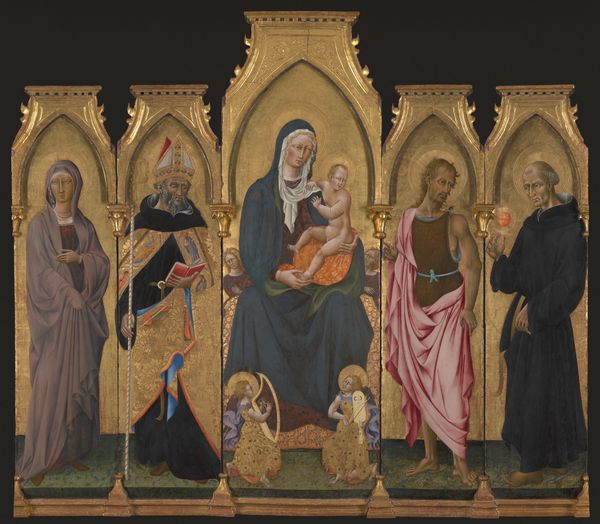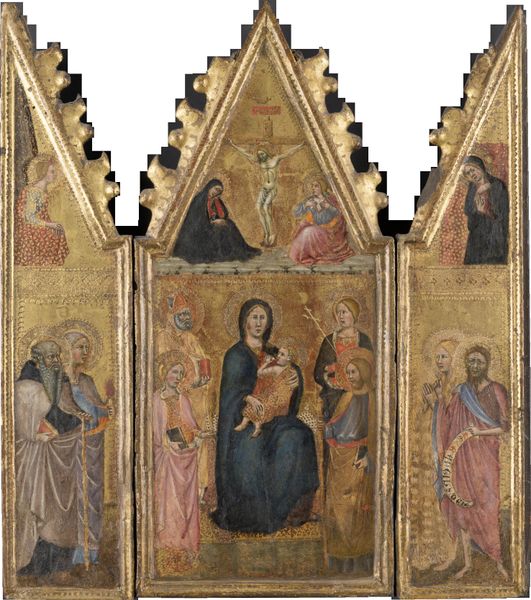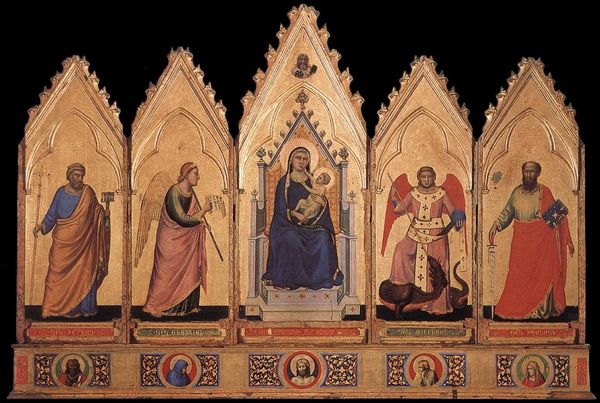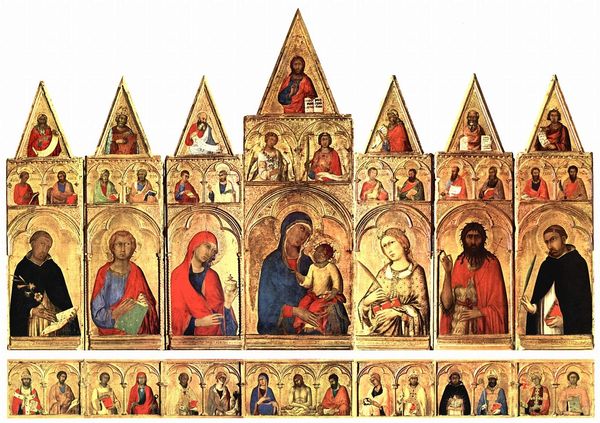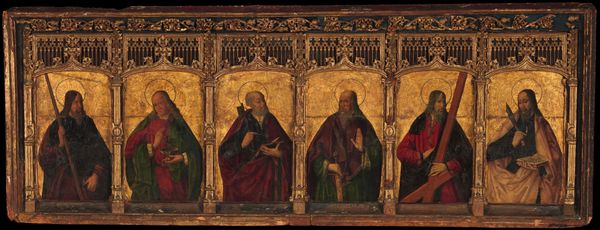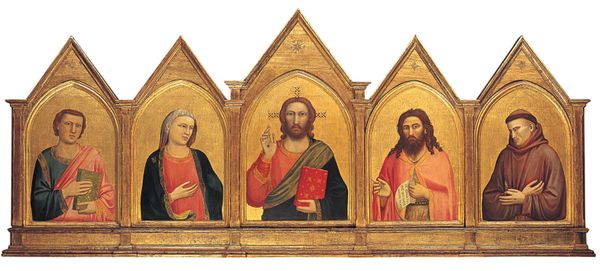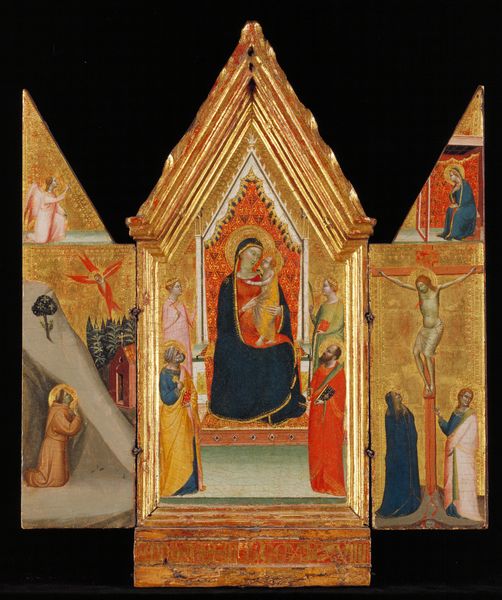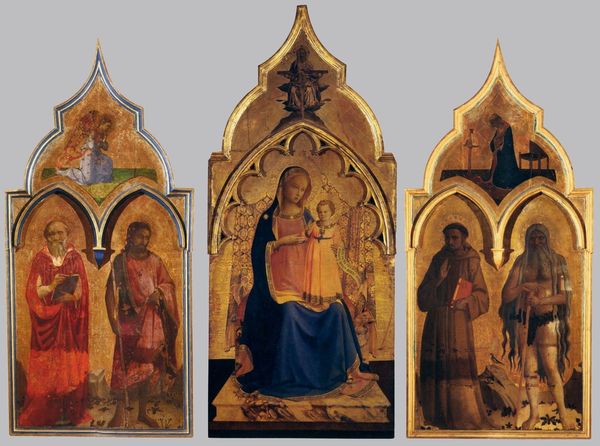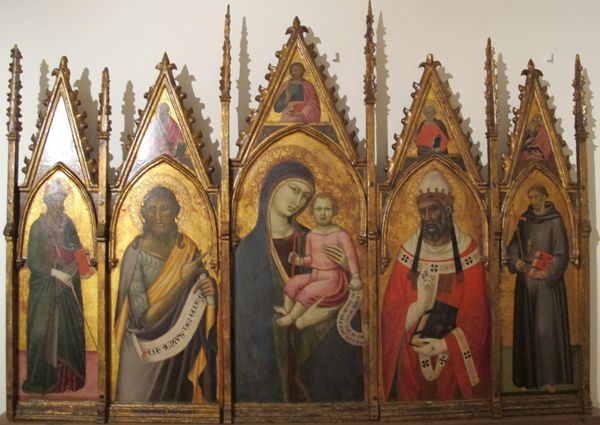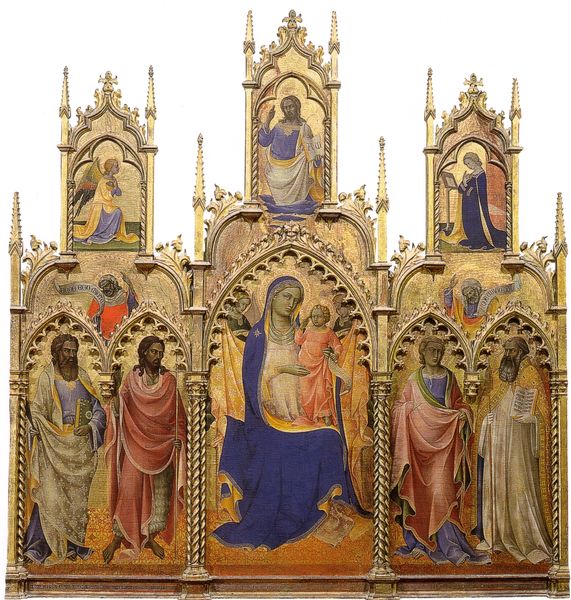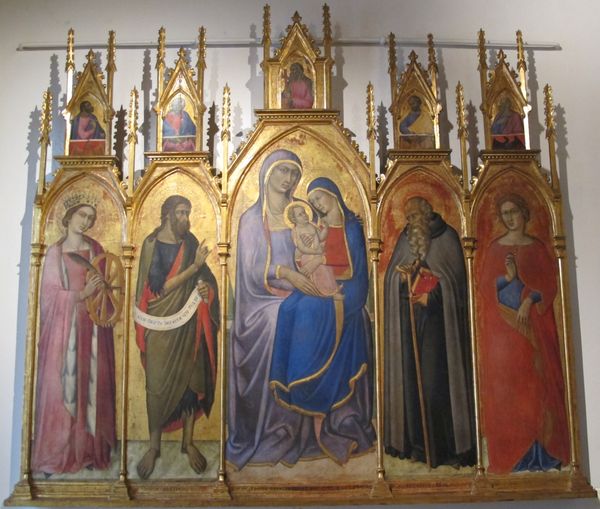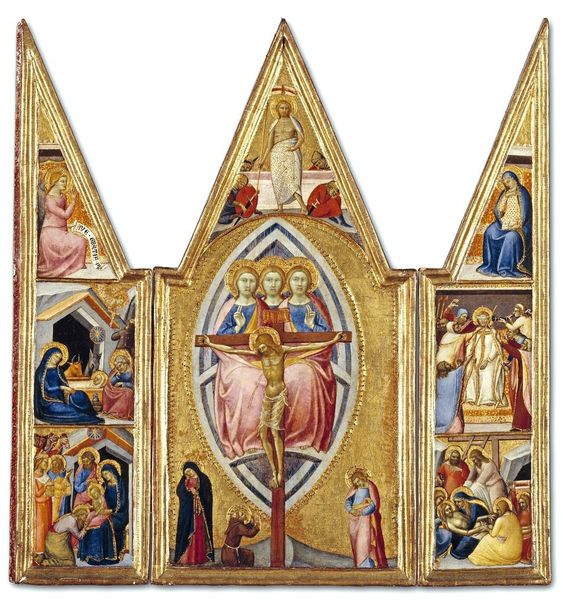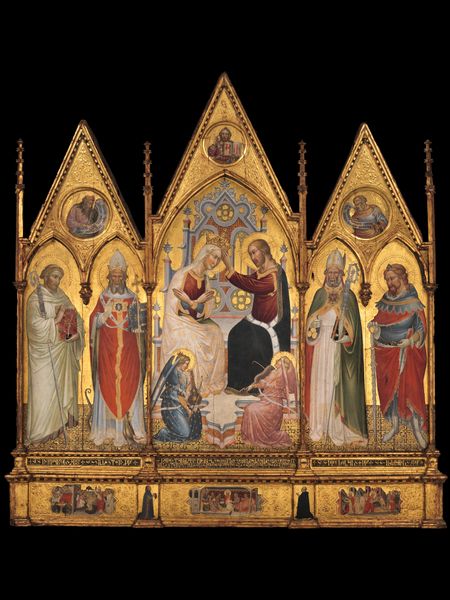
panel, tempera, painting
#
portrait
#
medieval
#
panel
#
narrative-art
#
tempera
#
painting
#
gothic
#
sienese-school
#
figuration
#
oil painting
#
underpainting
#
painting painterly
#
history-painting
#
italian-renaissance
Copyright: Public domain
Editor: This is Simone Martini's "Virgin and Child with Saints," a tempera on panel, dating back to 1325. The gold leaf really catches the eye, creating such a rich, decorative effect. With its symmetry and the arrangement of figures, I find it very calming and ordered. What strikes you most when you look at this polyptych? Curator: The articulation of form within the panels reveals Martini's masterful handling of line and color. Notice the elegant, elongated figures, each existing in their own contained space, yet unified through the consistent use of a gold ground. The formal relationships—the repetition of shapes and colors—invite the eye to move systematically across the composition. What purpose do you think the hierarchical scaling might have served? Editor: I suppose to emphasize the Virgin and Child’s importance and central role. It’s a very effective way to draw focus, isn't it? But how does the work's Gothic style influence your interpretation? Curator: Precisely. We might also read it through a lens of architectural structure. Gothic architecture emphasized verticality and light, which we see echoed in the pointed arches of each panel and the radiant gold leaf. The effect is not merely decorative but symbolic, drawing the viewer's gaze upwards, creating a sense of divine aspiration. Editor: So, you see a link between the architectural trends of the time and the artistic style, highlighting form and structure? I hadn’t considered it that way. Curator: Indeed. The beauty resides not just in the subject matter, but in the artist’s precise arrangement of forms and manipulation of materials. This allows us to appreciate Martini’s unique vision, separate from its function as a religious altarpiece. Editor: This discussion really enriches my understanding of the painting's appeal beyond its devotional purpose. I appreciate how you’ve helped me understand its aesthetic qualities.
Comments
No comments
Be the first to comment and join the conversation on the ultimate creative platform.
